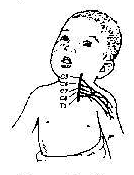

|
Overview Understanding Brachial Plexus Palsy
|
BACKGROUNDWhen nerves in the brachial plexus get damaged, signals cannot travel like usual from the brain to the arm muscles. So some or all of your child's arm muscles may no longer work. When this affects only the shoulder and elbow muscles, it is called an Erb's palsy. -- Seatle Children's HospitalThe brachial plexus is a network of nerves that conducts signals from the spinal cord, which is housed in the spinal canal of the vertebral column (or spine), to the shoulder, arm and hand. These nerves originate in the fifth, sixth, seventh and eighth cervical (C5–C8), and first thoracic (T1) spinal nerves, and innervate the muscles and skin of the chest, shoulder, arm and hand. Brachial plexus injuries, or lesions, are caused by damage to those nerves. Brachial plexus injuries, or lesions, can occur as a result of shoulder trauma, tumours, or inflammation. The rare Parsonage-Turner Syndrome causes brachial plexus inflammation without obvious injury, but with nevertheless disabling symptoms. But in general, brachial plexus lesions can be classified as either traumatic or obstetric. Obstetric injuries may occur from mechanical injury involving shoulder dystocia during difficult childbirth. Traumatic injury may arise from several causes. "The brachial plexus may be injured by falls from a height on to the side of the head and shoulder, whereby the nerves of the plexus are violently stretched....The brachial plexus may also be injured by direct violence or gunshot wounds, by violent traction on the arm, or by efforts at reducing a dislocation of the shoulder joint". -- Wikipedia
|
All material was published by an unknown source.
